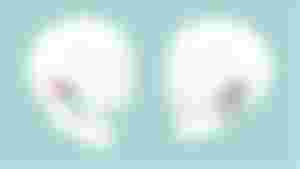Science Surprises Again
Although it is thought that no stones are left untouched in the human body in the anatomical studies carried out in the last 100 years, scientists have recently made another new discovery. The existence of a hypothetical muscle layer in the human jaw has been confirmed for a long time.
The world of science continues to surprise us with each passing day. While we could not even reveal some secrets in our own body, another proof of this has been revealed today. Scientists have announced that a new muscle has been discovered in the human face. It was stated that this new muscle, which can rewrite anatomy books, is located on the back of the cheeks and undertakes the task of fixing the lower jaw.
Scientists led by Szilvia Mezey from the University of Basel in Switzerland stated that the muscle behind the cheeks, which was considered the most prominent of the jaw muscles before the discovery, was thought to be hypothetical and composed of a single deep layer until now. It was explained that the movement of the newly discovered muscle is felt prominently between the cheeks when the teeth are pressed together.
The masseter muscle was thought to consist of layers

The study, published December 2 in the Annals of Anatomy, described the structure of the masseter muscle, one of the masticatory muscles, as a structure formed in the third and deeper layer. Dr. In his statement, Mezey said that this deep part of the masseter muscle can be more clearly distinguished from the other two layers in terms of function.
Other previous studies suggested that the masseter muscle may have three layers. But scientists noted that these early explanations were "highly inconsistent." Scientists, the new study examined the muscles of 24 individuals. Twelve of these individuals were deceased individuals who had donated their bodies to science.
This layer, which was discovered as a result of the examination, was named 'Musculus masseter pars coronidea (coronoid part of the masseter)' emphasizing that it is connected to the muscular or 'coronoid' protrusion of the lower jaw. In the team, Dr. Jens Christoph Türp stated that although it is assumed that the anatomical studies conducted in the last 100 years have investigated all kinds of places, the finding is similar to the discovery of a new vertebrate species.
